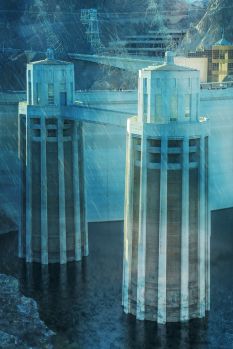Power Generation: Difference between revisions
From ASDSO Dam Safety Toolbox
No edit summary |
Rmanwaring (talk | contribs) No edit summary |
||
| Line 14: | Line 14: | ||
Hoover Dam Hydropower | Hoover Dam Hydropower | ||
}} | }} | ||
Hydropower, or hydroelectric power, is one of the oldest and largest sources of renewable energy, which uses the natural flow of moving water to generate electricity. The energy created by the elevation difference of the water passing through the dam is captured by a generator and transmitted to a nearby power grid. The United States is the fourth largest producer of hydropower in the world. Dams produce approximately 6.3 percent of the nation’s electricity generation. | |||
<!-- Revision history information --> | <!-- Revision history information --> | ||
{{revhistinf}} | {{revhistinf}} | ||
Revision as of 22:19, 1 September 2022

|
| Hoover Dam Hydropower |
Hydropower, or hydroelectric power, is one of the oldest and largest sources of renewable energy, which uses the natural flow of moving water to generate electricity. The energy created by the elevation difference of the water passing through the dam is captured by a generator and transmitted to a nearby power grid. The United States is the fourth largest producer of hydropower in the world. Dams produce approximately 6.3 percent of the nation’s electricity generation.
Revision ID: 2347
Revision Date: 09/01/2022
